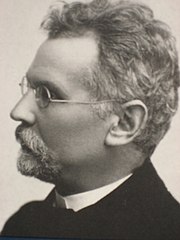Prus Boleslaw's Human Design Chart
3/5 Emotional ManifestorPolish journalist, short-story writer, and novelist who was one of the leading figures of the Positivist period in Polish literature following the 1863 January Insurrection against Russian rule.
Born to an impoverished gentry family, Prus was orphaned early in life and struggled unsuccessfully to complete his education. As a young man, he took an active part in the January Insurrection. Throughout much of his life he contributed articles called “chronicles” to daily papers and periodicals; these reveal the talent for detailed observation and lively presentation that was to make his novels and short stories so effective.
A strong proponent of Poland’s version of Positivist philosophy, Prus gradually changed from a journalistic career to fiction, and became known as a leading Polish prose writer of the second half of the 19th century. Among his best-known short stories are “Anielka” (1880; “Annie”), “Katarynka” (1881; “The Barrel Organ”), and “Kamizelka” (1882; “The Waistcoat”). “The Barrel Organ” and “The Waistcoat” are included in the English-language volume of Prus’s stories entitled The Sins of Childhood and Other Stories (1996). As a novelist, he was considered a major Realist, with his Lalka (1890; “The Doll,” filmed 1969) giving a complex picture of Warsaw’s social classes at the end of the century. In Faraon (1897; The Pharaoh and the Priest) he used the conflict between ruler and clergy in ancient Egypt as a metaphor for his depiction of the power struggle in modern society.
He died 19 May 1912.
Link to Wikipedia biography
Discover More Famous People
Browse and analyze over 55,000 public figures and celebrities.
Ra Uru Hu
5/1 Manifestor
Martha Stewart
4/6 Manifestor
David Lynch
4/6 Generator
Barack Obama
6/2 Projector
Steve Jobs
6/3 Generator
Vladimir Putin
5/1 Manifestor
Kim Kardashian
3/5 Generator
Michael Jackson
1/3 Projector
Marilyn Monroe
6/2 Projector
Ariana Grande
2/4 Projector
Oprah Winfrey
2/4 Generator
Johnny Depp
2/4 ManifestorWhat is HumanDesign.ai and how does it work?
Curious what makes Prus Boleslaw tick? HumanDesign.ai instantly maps their exact birth data into a fully interactive clickable bodygraph chart, letting you hover or tap every center, channel, and gate for plain-language explanations. Bella, the platform’s built-in AI guide, adds context in real time, translating complex mechanics into everyday insights so you can see how Prus Boleslaw’s strengths, challenges, and life themes play out on-screen.
The same tools are waiting for you. Generate your own Human Design Chart in seconds, open a library of 2000+ suggested questions, and chat with Bella as often as you like to decode your design, daily transits, and even relationship dynamics.
Want to compare energies? Save unlimited charts for friends, family, or clients, then ask Bella to reveal compatibilities, composite patterns, or coaching tips, all in one conversation thread.
Start free with core features, or unlock our Personal and Pro plans for deeper dives: unlimited Q&A, celebrity chart search spanning 55,000+ public figures, white-label PDF reports, branded content generation, and a professional profile with built-in booking for practitioners. Whether you’re exploring your own potential or guiding others, HumanDesign.ai delivers an ever-expanding toolbox of AI-powered insights—no spreadsheets, no jargon, just clarity at your fingertips.
Ready to see yours? Signup for FREE today!

